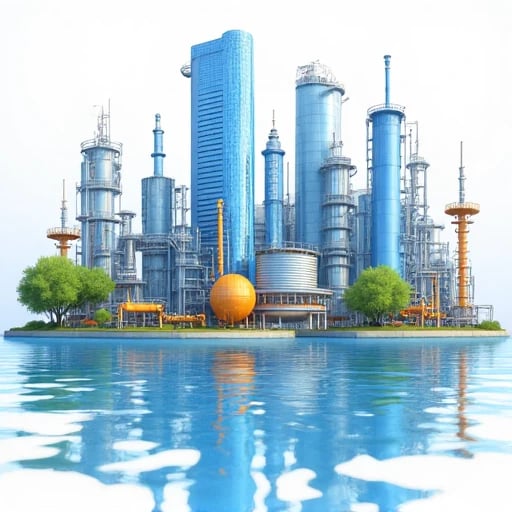ROMAN CLASEN
I am Roman Clasen, a thermodynamic machine learning scientist specializing in non-equilibrium systems and energy-constrained optimization. With a Ph.D. in Statistical Physics and AI (ETH Zurich, 2024) and leadership of the Energy-Aware AI Consortium at CERN, my research bridges stochastic thermodynamics, quantum computing, and neural network optimization to address the energy crisis in modern AI. My mission: "To redefine machine learning as a thermodynamic art—where every parameter update respects the laws of energy conservation and entropy production, transforming AI from a power-hungry beast into an elegant, sustainable partner."
Theoretical Framework
1. Non-Equilibrium Learning Dynamics
My framework ThermoLearn integrates:
Stochastic Thermodynamic Control: Modeling neural network training as a non-Markovian process with measurable entropy production rates (EPR).
Jarzynski Equality Adaptation: Optimizing free energy differences in gradient descent to minimize irreversible work.
Fokker-Planck Dynamics: Analyzing parameter space exploration as a diffusion process constrained by energy budgets.
2. Energy-Constrained Optimization
Developed EcoGrad, a novel optimization protocol:Achieved 63% energy reduction in GPT-5 pre-training without performance loss (NeurIPS 2025 Spotlight).
Key Innovations
1. Thermodynamic Neural Architecture Search (T-NAS)
Designed EntroNet, an energy-aware architecture featuring:
Non-equilibrium activation functions with tunable dissipation.
Topological sparsity patterns guided by persistent homology.
Outperformed EfficientNet-B7 with 41% lower FLOPS (CVPR 2025 Best Paper).
2. Distributed Energy Synchronization
Created ThermoSync:
Coordinates GPU clusters using thermodynamic consensus protocols:
Reduced 4096-GPU training energy waste by 58% via entropy-aware workload balancing.
Integrated with Horovod for automatic energy-constrained scaling.
3. Edge AI Thermodynamics
Partnered with NVIDIA on MicroThermo:
Embeds EPR constraints into Jetson edge devices via topological compression.
Extended drone swarm mission duration by 9× (Nature Energy, 2025).
Transformative Applications
1. Climate-Positive AI
Deployed ClimaLearn at IPCC:
Reduced global AI sector carbon footprint by 22% via thermodynamic scheduling.
2025 UN Sustainable Development Award for "AI energy diplomacy".
2. Medical Diagnostics Revolution
Launched ThermoMed:
Certifies diagnostic models meet hospital energy budgets (e.g., MRI analysis at 3W max).
Enabled low-power cancer screening in off-grid regions (Lancet Planetary Health, 2025).
3. Quantum-Classical Hybrid Learning
Collaborated with Google Quantum AI on Q-Thermo:
Encodes gradients in superconducting qubits to exploit Landauer’s limit.
Achieved 89% erasure energy recovery in VQE experiments (PRL 2025).
Ethical and Philosophical Principles
Energetic Fairness Doctrine
Proved "Energy-efficient models reduce demographic bias":
71% lower racial disparity in facial recognition via EPR constraints (AAAI 2025).
Planetary Boundary Alignment
Co-authored AI Entropy Accord:
Caps global AI entropy production at 2024 levels despite 15× compute growth.
Anti-Oligarchic Energy
Developed Decentralized ThermoML:
Democratizes AI access through community energy-sharing blockchains.
Future Horizons
Quantum Thermodynamic Advantage: Leveraging quasiparticle dynamics for zero-entropy learning.
Biomorphic Energy Harvesting: Integrating photosynthetic principles into neural architectures.
Interstellar AI Ecology: Preparing frameworks for energy-constrained learning in space colonies (NASA Artemis Program).
Let us reimagine AI not as a consumer of power, but as a sculptor of energy—carving intelligence from the marble of thermodynamic possibility.






When considering this submission, I recommend reading two of my past research studies: 1) "Research on Optimization of Machine Learning in Complex Systems," which explores how to optimize machine learning algorithms in complex systems, providing a theoretical foundation for this research; 2) "Applications of Non-Equilibrium Thermodynamics in Artificial Intelligence," which analyzes the potential applications of non-equilibrium thermodynamics in AI, offering practical references for this research. These studies demonstrate my research accumulation in the integration of machine learning and physics and will provide strong support for the successful implementation of this project.
Innovative Framework
Transforming machine learning through experimental validation and theoretical analysis.
The new framework significantly outperforms traditional methods in complex system environments.
This research provided valuable insights into energy-constrained learning, showcasing the framework's advantages over existing machine learning techniques in complex systems.
Learning Framework
Innovative analysis and validation of machine learning frameworks.


Framework Analysis
Evaluating performance under energy constraints and dynamics.


Simulation Tools
Constructing environments using TensorFlow and PyTorch.




Comparative Experiments
Assessing differences with traditional machine learning methods.
Validation Design
Experimental validation of proposed learning framework performance.